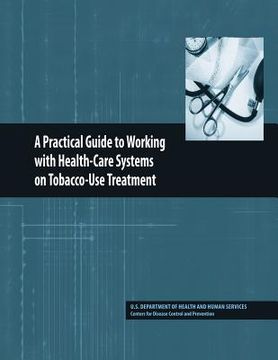A Practical Guide to Working with Health-Care Systems on Tobacco-Use Treatment (in English)
Synopsis "A Practical Guide to Working with Health-Care Systems on Tobacco-Use Treatment (in English)"
Promoting widespread use of treatment for tobacco dependence is one of the primary goals in improving public health (U.S. Department of Health and Human Services, 2000). Tobacco use, and smoking in particular, causes many of the chronic and debilitating diseases that affect the population and stress the health-care system. Such diseases include heart disease, stroke, multiple cancers, and respiratory diseases, as well as complications of pregnancy such as preterm delivery and low infant birth weight (U.S. Department of Health and Human Services, 1989, 2001, and 2004; National Cancer Institute, 1999). State health departments and businesses are uniquely positioned to expand the provision of tobacco-dependence treatment through partnerships and purchasing strategies. Insurance coverage can be expanded for state employees and Medicaid recipients. Business partnerships can be developed to initiate or expand coverage for self-insured or indemnity populations. Comprehensive benefits must be appropriately promoted, and their use should be monitored. This guide will review what is known about implementing comprehensive tobacco-control and treatment strategies within health-care systems. Provided within are examples of effective partnerships between public health agencies, health-care systems, and the business community. Also included is a primer designed to promote a better understanding of health care for those not familiar with systems operations. The reader should be aware that this guide uses the term "patient" in the broadest sense-therefore, users of this guide should not exclude opportunities for providers to treat tobacco use among relatives, such as parents of infant, child, and adolescent patients; other patient family members; and any other individuals with whom providers have contact through interactions with patients. Approximately 28% of adolescents in this county currently use tobacco, 22% of whom are smokers (Centers for Disease Control and Prevention [CDC], 2005a). Additionally, more than one in five adults in this country currently smoke (CDC, 2004b), but most want to quit. In 2002, 70% of smokers reported that they wanted to quit, and 41% attempted to quit for at least 24 hours in the past year. However, only about 5% of smokers maintained abstinence for 3 to 12 months (CDC, 2005b). Safe and effective tobacco-use treatments that greatly enhance success in quitting are available, but many smokers do not or cannot access these treatments (Fiore et al., 2000). Most who try to quit may not be successful because they do not use effective treatments (American Cancer Society, 2003; Zhu et al., 2000). In terms of efficacy, cost effectiveness, and impact, tobacco-use treatment has been ranked in the top three preventive services and has been specified as cost saving (Maciosek et al., 2006). Experts agree that reducing the number of new smokers and helping current smokers quit plays a critical role in improving public health (Peto et al., 2000). Reducing tobacco use is a key component of Healthy People 2010-the nation's action plan for improving public health in the first decade of the 21st century. This plan includes 21 objectives related to tobacco and a goal to reduce smoking prevalence by more than half (to 12%) by 2010. Current smoking prevalence in the United States is 20.8% (CDC, 2005b).

